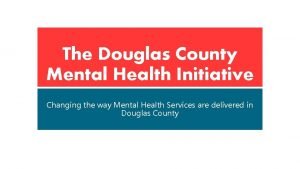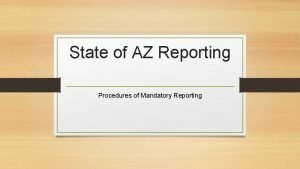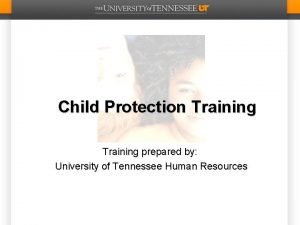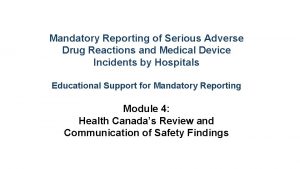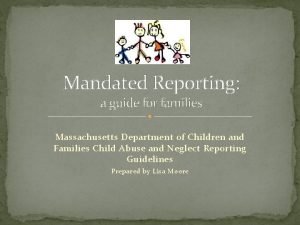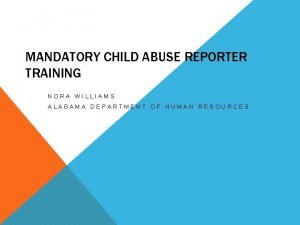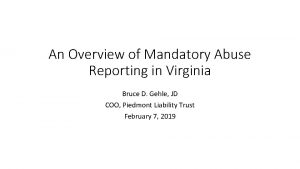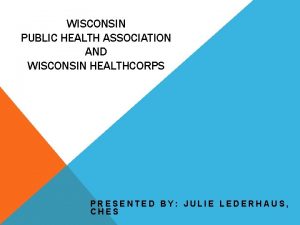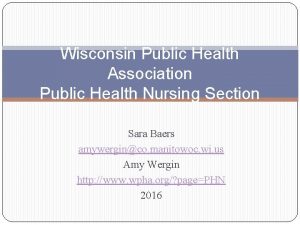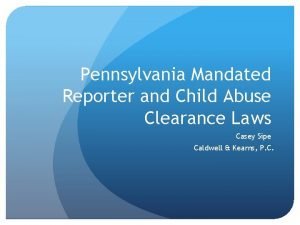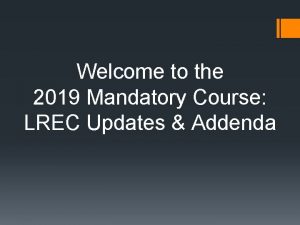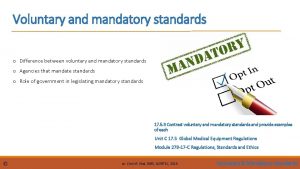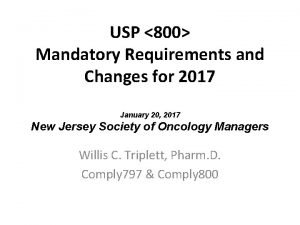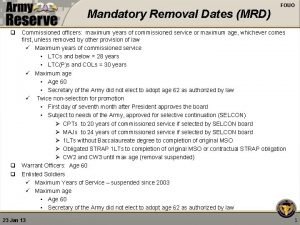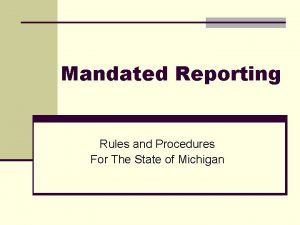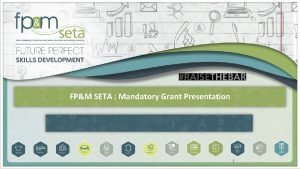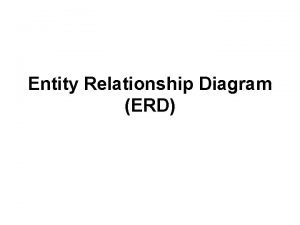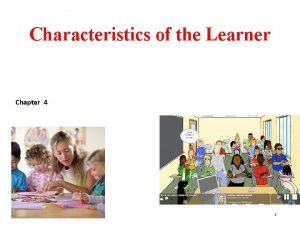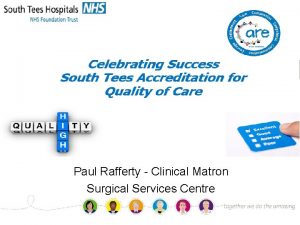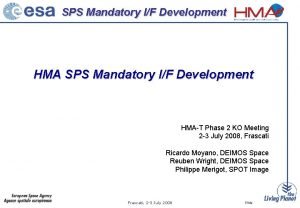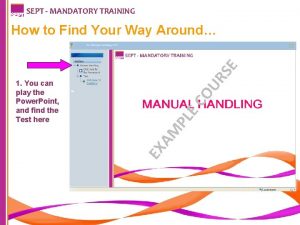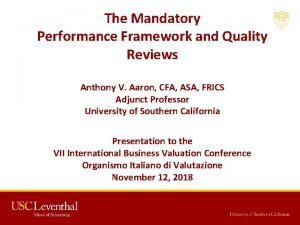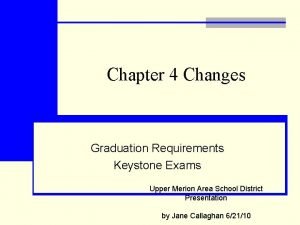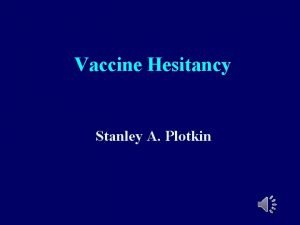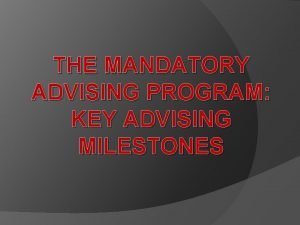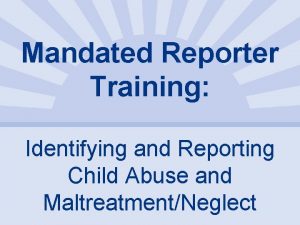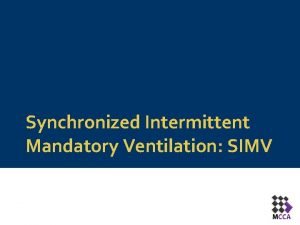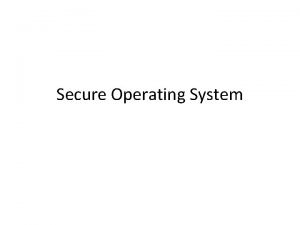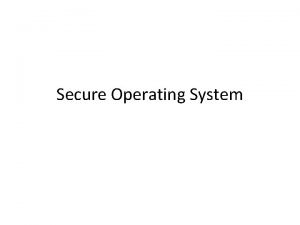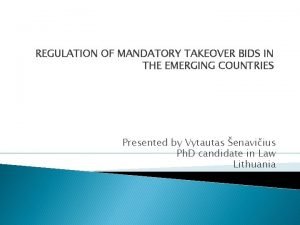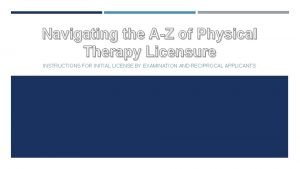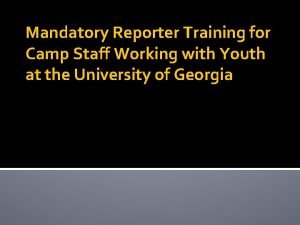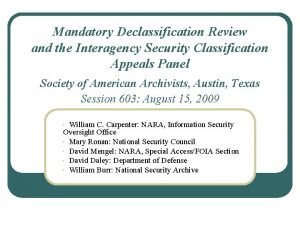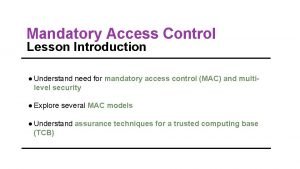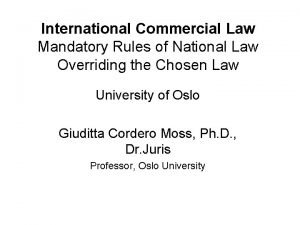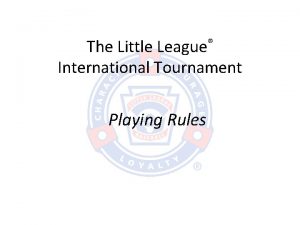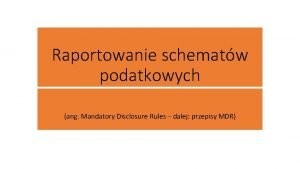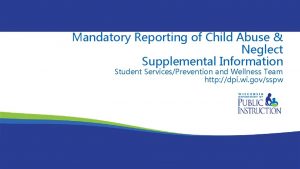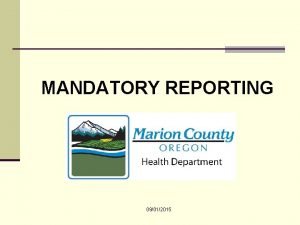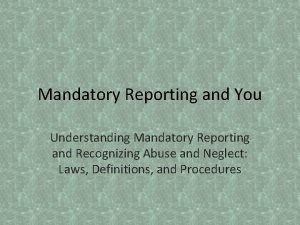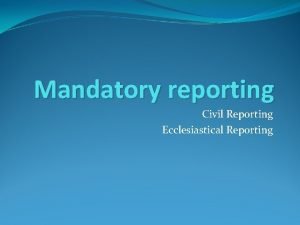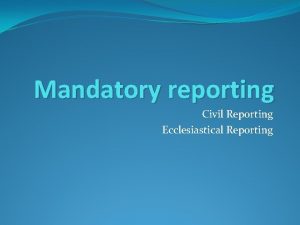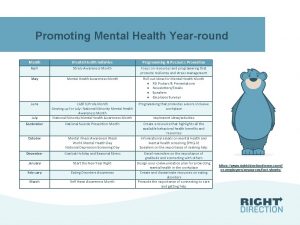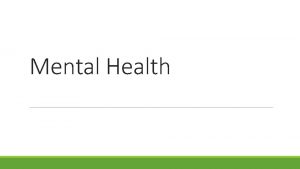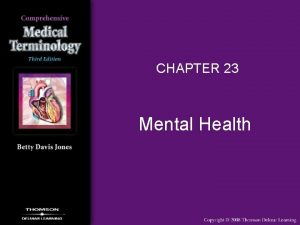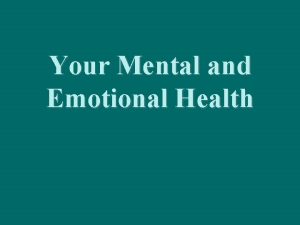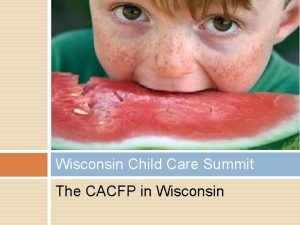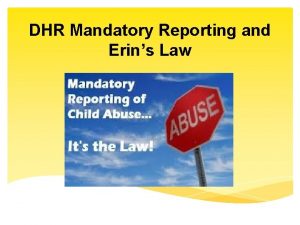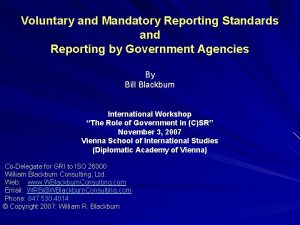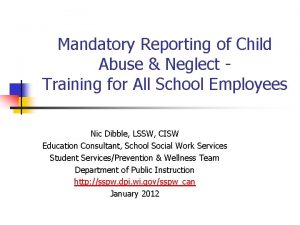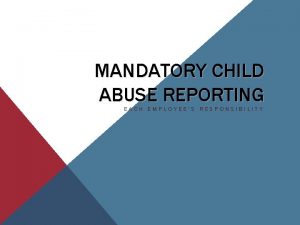Wisconsin Mental Health Initiative Mandatory Reporting of Child





















































- Slides: 53

Wisconsin Mental Health Initiative Mandatory Reporting of Child Abuse & Neglect Training for All School Employees Student Services/Prevention and Wellness Team http: //dpi. wi. gov/sspw

Acknowledgement • Appreciation is extended to the Wisconsin Department of Children and Families • One of several successful collaborations between DPI and DCF

Overview of Presentation • • • Types of child maltreatment Signs of child maltreatment What is not child abuse or neglect How to make a report and what to report Where to get more information *Mandated reporting of threats of school violence will be covered in a separate module.

Signs of Child Maltreatment • Generally, more signs = more concern • Making a report for suspected child maltreatment depends on ü Signs you observe ü Comments by student ü Interactions with family • Greater risk for children with disabilities. They may also be less likely to report incidents to school staff.

Does It Matter Who is Suspected of Abusing or Neglecting a Child? • Report neglect only if it involves a caregiver • Report emotional damage only if parents are suspected of not seeking treatment the student needs • Report physical or sexual abuse regardless of who is suspected of being involved, including if perpetrator is another minor Wis. Stats. 48. 02(1)(a-gm), (12 g)

Who are “caregivers”? Caregivers include … • • • Parents/guardians Relatives Foster parents Child care providers Babysitters • Teachers and other educators • Live-in partners of parents Wis. Stat. 48. 981(1)(am)

Prevention at School 1. Minimize the opportunity 2. Learn to recognize and speak up about grooming behaviors 3. Monitor the internet usage of students 4. Follow a code of conduct 5. Teach protective factors curriculum 6. Know unsupervised locations 7. React responsibly

What is Neglect? • Failure, refusal, or inability of a parent or other caregiver, for reasons other than poverty, to provide for the basic needs of a child to the point that it seriously endangers a child’s physical health • Can be related to inadequate food, clothing, shelter, medical or dental care, or supervision Wis. Stat. 48. 02(12 g)

Signs of Neglect Regular or frequent … • • Poor hygiene, body odor Inappropriate dress for weather Lack of needed health care Left alone and unsupervised for long periods • Arrives early and stays late • • • Habitual absences Listlessness or fatigue Hunger Failure to thrive, malnutrition Extreme willingness to please

Using the Signs of Neglect • Use signs of neglect and these questions to help determine if a report needs to be made ü How many signs do you see? ü Are the signs regular or frequent? • Student’s physical health must be seriously endangered

Learning Check Scenario: You meet privately with a 7 -year-old student and tell her that you have noticed that she frequently falls asleep in class. She responds that she watches her 2 -yearold brother most evenings and tries to stay up late until her mother comes home from work. You ask if she has any support from someone older in case of an emergency and she responds, “No. ” Should you make a report? ____ Yes ____ No

What is Physical Abuse? • Physical injury inflicted on a child that is not an accident • Lacerations, fractured bones, burns, internal injuries, severe or frequent bruising, or great bodily harm ü Must be severe enough to meet definition of physical injury to be considered physical abuse Wis. Stats. 48. 02(1)(a), (14 g)

What is Physical Abuse? (continued) • Person need not intend to injure child • Examples of no intent to injure child ü Shaking crying baby out of frustration ü Jerking child by the arm and dislocating elbow ü Corporal punishment that results in bruises or welts Wis. Stats. 48. 02(1)(a), (14 g)

Signs of Physical Abuse • Children commonly get bruises and bumps on their knees, elbows, and forearms from play and other activity • Bruising that is less likely to be from accidents ü Around cheeks, abdomen, thighs, neck, back, or midway between wrist and elbow ü Different colors ü On multiple parts of the body

Signs of Physical Abuse (continued) • • • Marks in shape of object Unexplained burns Delay in seeking medical help Extremes in behavior Afraid to go home Frightened of parents or other adults

Using the Signs of Physical Abuse Use signs of physical abuse and these questions to help determine if a report needs to be made • Does the explanation for the injury make sense to you? • Is student evasive about how the injury occurred?

Learning Check Scenario: You notice that a child in your class keeps adjusting how he sits in his chair and grimaces in pain as he moves. When you ask what is wrong, he responds he was punished again and it really hurts to sit on the chair. Should you make a report? ____ Yes ____ No

What is Emotional Damage? • Harm to a child’s psychological or intellectual functioning • Observed in … ü Anxiety, depression, withdrawal, or aggressive behavior Ø (any one or more of these exhibited to a severe degree), or ü Substantial change in the child’s behavior, emotional response, or thinking that is not normal for the child’s age or development Wis. Stats. 48. 02(1)(gm), (5 j)

Emotional Damage Educators are to report if … • See signs of emotional damage, AND • Parent has not obtained treatment for the child or taken other steps to improve the child’s symptoms Wis. Stat. 48. 02(1)(gm), (5)(j)

Signs of Possible Emotional Damage • Low self-esteem • Severe anxiety • Self-denigration • Extreme withdrawal • Severe depression • Failure to learn • Unusual level of aggression

Signs of Possible Emotional Damage (continued) Self-destructive or delinquent behavior • Abusing alcohol or drugs • Eating disorder • Suicidal talk, ideation, or attempts • Non-Suicidal Self-Injury (NSSI) *any of these behaviors alone would not warrant a report, unless a parent fails to obtain treatment for the child or fails to try in some other way to improve child’s symptoms

Using the Signs of Emotional Damage Use signs of emotional damage and these questions to help determine if a report needs to be made • Does student demonstrate anxiety, depression, withdrawal or aggressive behavior to a severe degree? • Has parent obtained treatment for child or tried some other way to improve child’s symptoms?

Learning Check Scenario: A student has attempted to take her own life by taking an overdose of sleeping pills. The parents believe she is just “a drama queen” who is seeking attention. They refuse to seek out any kind of professional therapy or medical attention, because they believe it will simply feed into her desire for attention. Should you make a report? ____ Yes ____ No

What is Sexual Abuse? Inappropriate sexual behavior or conduct with a child, including any inappropriate sexual touching • • • Fondling or exposing genitals Sexual contact or Intercourse by threat or force Sexual exploitation Exposure to pornography Having a child view or listen to sexual activity Allowing, encouraging, soliciting, recruiting, or transporting a child to engage in prostitution (or attempting any of these acts) Wis. Stat. §§ 48. 02(1)(b), (cm), (d), (e), (f)

What is Sexual Abuse? (continued) Even if a child or youth consents, it is considered abuse when an individual of any age has sexual contact or intercourse: • • • with a child under the age of 16 years with a child/youth by the child’s foster parent, out-of-home care provider, or worker or volunteer in facility in which the child is placed with a child/youth who receives direct care or treatment services from certain organizations or facilities (child welfare agency, shelter care, child care center, etc. ), by an employee, licensee, or non-client resident of the organization or facility Note: Though illegal, mandated reporters are not required to report sexual intercourse of 16 -17 year olds, if voluntary Wis. Stat. §§ 48. 02(1)(b), (cm), (d), (e), (f); 948. 093*

Access to Family Planning Children and youth are allowed to access confidential health care services without having this information reported. • • A school nurse providing family planning services to a minor is not required to report suspicion of the minor’s sexual activity, unless there are specific concerns as outlined in law School staff who learn that a student has accessed or is accessing family planning services are also not required to report this information Wis. Stat. 48. 981(2 m) and Wisconsin Attorney General Opinion 72 Atty. Gen. 93

Sexually Active Adolescents (continued) • Complex topic addressed ü DPI on-line module Mandatory Reporting of Child Abuse and Neglect – Supplemental Information ü DPI publication Reporting Requirements for Sexually Active Adolescents (Updated 2018) • Both of these resources can be found at http: //dpi. wi. gov/sspw/pupil-services/school-socialwork/contents/child-abuse-and-neglect

Signs of Possible Sexual Abuse • Extreme secrecy, compliance, or withdrawal • Unusual fear of people from one gender or with specific characteristics • Very seductive behavior or unusual interest in or knowledge of sex • Refusal to take part in gym or other activity

Signs of Possible Sexual Abuse (continued) • Sexual play with peers beyond curiosity • Physical symptoms ü Injury related to sexual activity ü Sexually transmitted infection • Poor peer relationships • Drastic change in school performance Note: Sexual curiosity and behaviors that are developmentally normal for preadolescent children are not sexual abuse

What is Child Sex Trafficking? • When any individual knowingly does or attempts to do any of the following: recruits, entices, provides, obtains, or harbors any child for the purpose of commercial sex acts, as defined in Wis. Stat. § 940. 302 (1) (a) • When any individual benefits in any manner from a violation of the above if the person knows that the benefits come from an act described above. • It must be reported, even if the perpetrator is unrelated to the child. Wis. Stat. § 48. 02(1)

At-Risk Child Sexual Trafficking Indicators Unexplained truancy History of physical or sexual abuse Reports by child that they have multiple sexual partners Travel out of the area that is unusual without caregiver permission or knowledge • Possession of money, electronics, or other material items that are unexplained or unusual for the child • Having older boy/girlfriend or partner • Gang affiliation Indicator Response Guide - • • https: //dcf. wisconsin. gov/files/aht/pdf/indi catorguide. pdf

High Risk Sexual Trafficking Indicators • Three or more at-risk factors (per Indicator Response Guide) • History of being missing/runaway/kicked out 1 or more times within the last 6 months (especially if caregiver is unsure of whereabouts) • Confirmed or reported use of hotels for parties or sexual encounters • Unexplained injuries • Unusual, unexplained, or out of the. Indicator ordinary tattoos Response Guide - https: //dcf. wisconsin. gov/files/aht/pdf/indi catorguide. pdf

Learning Check Scenario: A 12 -year-old student asks to use the rest room frequently and complains her “privates” itch. Should you make a report? ____ Yes ____ No

Methamphetamine Manufacture Methamphetamine manufacture that a child can see, smell, or hear is child abuse in Wisconsin. Wis. Stat. 48. 02(1)(g)

What is Not Child Maltreatment? • Failure to give prescribed medication to a child, unless it threatens child’s life or health • Examples ü Parent who declines to provide stimulant medication to child with ADHD – no report ü Parent who declines to provide insulin to child with diabetes – make a report

What is Not Child Maltreatment? • Truancy ü Follow provisions in Wis. Stat. 118. 16 • Suicidal talk, ideation, or attempt or Non-Suicidal Self. Injury (NSSI) • unless student demonstrates symptoms of emotional damage AND parent has refused to obtain necessary treatment for student ü Failure by parent to obtain necessary treatment might be reason to report suspected emotional damage

Who Must Report A school district employee must immediately report to county Child Protective Services (CPS) or local law enforcement, if the educator has reasonable cause to suspect a child the educator has seen as part of her/his/their work … • Has been abused or neglected, or • Has been threatened with abuse or neglect and the educator believes it will occur Wis. Stat. 48. 981(2)(a), (3)(a)1.

Who is Not Required to Report • School staff who suspect abuse or neglect while not in the course of their professional duties • Contracted staff (e. g. , bus drivers) • Volunteers who work directly with students • School districts may choose to extend expectations to notify appropriate school authorities of suspected child maltreatment to contracted staff and volunteers

Learning Check True or False: Reporting suspected child maltreatment may be delegated to another educator who knows the child and is more familiar with how to make a report. ___ True ___ False

Reporting Suspected Child Maltreatment • Report must be made to county Child Protective Services or local law enforcement ü Contact law enforcement when there may be immediate danger to a student • Report immediately by telephone or in person Wis. Stat. 48. 981(3)(a)1.

Liability Protection • State law prohibits anyone who makes a report in good faith from being fired, disciplined, or otherwise discriminated against in regard to employment, or from being threatened with such treatment • Reporter is protected from both civil and criminal liability Wis. Stats. 48. 981(2)(e), (4)

Confidentiality and Penalties • Penalties for not reporting abuse or neglect • Penalties for sharing information that identifies a reporter without authorization ü Fine up to $1, 000 ü Up to 6 months in jail Wis. Stats. 48. 981(6), (7)

What if You Are Not Sure … • Common to be unsure if a report should be made • OK to talk to someone who can help to determine if a report is necessary ü Pupil services professional or school administrator ü County Child Protective Services or law enforcement no need to mention name • Talking to someone else may not delay a report • Do not send an email or leave a voice message for pupil services staff Wis. Stat. 48. 981(3)(a)1.

Disclosures Made in the Classroom • Student discloses abuse or neglect in a classroom discussion • • acknowledge the disclosure, and act to refocus the conversation find a way to talk with the student privately immediately after class discuss with the class general concerns about the harmful effects of gossiping, and about keeping information shared in class private Student discloses abuse or neglect in a writing assignment • • talk with the student immediately about the possible disclosure if student verifies that the writing is about them and a non-fictional situation, make a report

Learning Check Which of the following are acceptable ways to report suspected child maltreatment? Check all that apply. ____ Phone ____ Email ____ Text ____ In person

What to Report When you make a report, Child Protective Services will want to know … • Information about student, parent(s), other household members and siblings, suspected abuser • Specifics of observed injury • Any statements made by student

What to Report (continued) When you make a report, Child Protective Services will want to know … • Any prior concerns you may have about possible mistreatment • Special needs student may have • Relevant cultural context

What to Report (continued) Be prepared to offer this information • Does suspected perpetrator have access to student? • Do you have any concerns for student’s immediate safety? • Does anyone else know about suspected abuse or neglect? • Are there other children in student’s household?

May You Share Information from Pupil Records in your Report? • Pertinent information from pupil records may be shared for the purposes of making a report of child abuse or neglect • Information from pupil records may be shared to protect someone’s health or safety in an emergency Wis. Stat. sec. 118. 125(2)(p); 34 CFR 99. 31, 99. 36

Making the Report • OK to ask the intake worker questions • Document your report ü ü Date What you reported Agency you reported to Name and contact information of person you reported to

Learning Check How soon are you to make a report of suspected child maltreatment? ____ immediately ____ by the end of the school day ____ within 24 hours

Sources for More Information Department of Public Instruction http: //dpi. wi. gov/sspw/pupil-services/school-socialwork/contents/child-abuse-and-neglect Department of Children and Families https: //dcf. wisconsin. gov/

Sources for More Information (continued) • County departments of social services • Police-school liaison officers or other local law enforcement officers • School social workers, counselors, nurses, psychologists, and administrators
 Douglas county mental health initiative
Douglas county mental health initiative Mandatory reporting procedures
Mandatory reporting procedures Tn mandatory reporting laws
Tn mandatory reporting laws Mandatory reporting
Mandatory reporting Mandated reporter training massachusetts
Mandated reporter training massachusetts Mandated reporter alabama
Mandated reporter alabama Virginia mandatory reporting law domestic violence
Virginia mandatory reporting law domestic violence Mental health and mental illness chapter 20
Mental health and mental illness chapter 20 Stress management jeopardy
Stress management jeopardy National program related to child health and welfare
National program related to child health and welfare Wisconsin public health association
Wisconsin public health association Wisconsin public health association
Wisconsin public health association Wisconsin health corps
Wisconsin health corps Pa child abuse reporting
Pa child abuse reporting 패자트리
패자트리 Lrec purchase agreement
Lrec purchase agreement Mandatory standards examples
Mandatory standards examples Is usp 800 mandatory
Is usp 800 mandatory Crow foot notation weak entity
Crow foot notation weak entity Nature is not mandatory but permissive
Nature is not mandatory but permissive Mandatory meeting notice
Mandatory meeting notice Ngr 635-100
Ngr 635-100 Mandated reporter michigan
Mandated reporter michigan Bgp attributes
Bgp attributes Seta mandatory grant
Seta mandatory grant Entity-relationship diagram (erd) merupakan
Entity-relationship diagram (erd) merupakan In experiential readiness motivation is also known as
In experiential readiness motivation is also known as Mandatory corporate action
Mandatory corporate action Ward accreditation
Ward accreditation Mandatory photo spot
Mandatory photo spot 250000000/20000
250000000/20000 Mandatory training definition
Mandatory training definition Mandatory performance framework
Mandatory performance framework Mandatory html tags
Mandatory html tags Are the keystone exams mandatory
Are the keystone exams mandatory Mandatory vaccination
Mandatory vaccination Mandatory
Mandatory Mandatory product adaptation
Mandatory product adaptation Mandatory product adaptation
Mandatory product adaptation Mandatory reporter training assessment answers colorado
Mandatory reporter training assessment answers colorado Synchronized intermittent mandatory ventilation
Synchronized intermittent mandatory ventilation Mandatory protection system
Mandatory protection system Mandatory protection system
Mandatory protection system Mandatory take over
Mandatory take over [email protected]
[email protected] What is a mandated reporter
What is a mandated reporter Mandatory declassification review
Mandatory declassification review Mandatory access control (mac)
Mandatory access control (mac) Mandatory rules examples
Mandatory rules examples Entitlement spending
Entitlement spending What does xhtml stand for
What does xhtml stand for Little league international rules
Little league international rules Initial capabilities document
Initial capabilities document Dalej ang
Dalej ang
